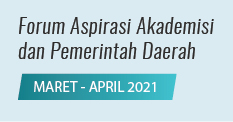
Revenue collection. The link between revenue collection and the population reflects the fact that the population is the source of all funds (apart from funds received from other countries or external aid agencies). The reverse link, labelled “entitlement?” signifies that in some systems, entitlement to benefits depends on the contributions made by or on behalf of individuals, whereas in others, entitlement is a condition of citizenship or residence. The presence or absence of this contribution–entitlement link is the one important conceptual distinction between the Bismarck and Beveridge models of health financing.
Pooling. In its most generic sense, pooling of funds refers to the accumulation of pre-paid revenues on behalf of a population. The position of pooling between collection and purchasing – suggests the importance of understanding the relationships (particularly the allocation mechanisms) between these sub-functions. This implies the need to analyse the horizontal market structure of pooling (for example, single or multiple, choice of pool, territorially distinct or overlapping, and so on) in a particular country, as well as whether or not pooling agencies are vertically integrated with (or separate from) agencies responsible for revenue collection and purchasing .
Purchasing is a generic term that refers to the transfer of pooled funds to providers on behalf of a population. Purchasing enables coverage to be provided for individuals. In other words, funds are pooled and services purchased on behalf of some or all of the population. Key issues in purchasing relate to the agencies that implement this sub-function, the market structure of purchasing and the mechanisms used to purchase. Agencies and market structure issues are very similar to those relating to pooling, given the usual situation in which both sub-functions are implemented by the same agency. Much attention has been given to the need to move from passive purchasing to active or strategic purchasing, which at a minimum requires linking at least some of the provider allocation to information regarding their performance or the health needs of the population. Hence, changing the contents and role of information systems has been integral to the process of implementing purchasing reforms throughout the region. Specific mechanisms involve changes in the way in which providers are contracted and paid in order to change incentives to improve the quality and efficiency of service delivery. There may be retrospective administrative procedures associated with this, to check on the quality and appropriateness of care, or at a minimum to detect fraudulent reporting (Figueras, Robinson and Jakubowski 2005)
 Implementing Health Financing Reform
Implementing Health Financing Reform
![]() Blended Advocacy - Monitoring dan Evaluasi Program Jaminan Kesehatan Nasional Tahun 2015 (Individu)
Blended Advocacy - Monitoring dan Evaluasi Program Jaminan Kesehatan Nasional Tahun 2015 (Individu)













